Swiss electricity providers face shocking challenges

Switzerland plays a central role in the transmission of electricity in Europe. However, the war in Ukraine, the energy transition and the ongoing lack of agreement with the EU represent huge challenges for those managing the Swiss network. How can blackouts be avoided?
On January 8, 2021, something went very wrong. An unexpected loss of frequency on the European gridExternal link literally split the continent in two: southeastern Europe on one side and central and western Europe on the other. The trouble, which lasted for about an hour, had been caused by a breakdown in a substation in Croatia. Most people didn’t notice anything – some countries in central Europe had to reduce electricity consumption – but the accident could have left hundreds of millions of people in the dark.
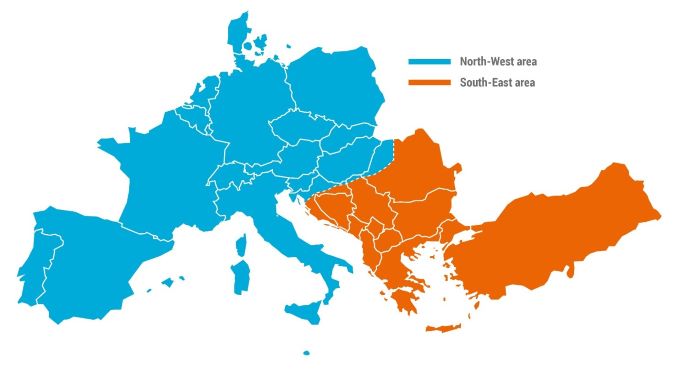
That a major blackout was avoided was due in part to intervention by Swissgrid, which operates the high-voltage transmission grid in Switzerland and is also responsible for exchanging electricity between the Alpine country and its neighbours. As a coordinating centre for southern Europe, it worked with other companies operating national grids to resynchronise the European grid and head off disaster.
“That’s our job – being ready for what’s predictable and managing unpredictable events in real time,” Alessandro Cameroni, spokesperson for Swissgrid, told SWI swissinfo.ch.
Sweeping changes
The Swiss power grid is an essential part of the European grid, which supplies electricity to more than 530 million people spread across more than 30 countries.
Switzerland is actually where the interconnected grid began: the Star of LaufenburgExternal link, a substation in canton Aargau, was where the electrical networks of Switzerland, Germany and France were connected for the first time in 1958.
Today, 41 cross-border lines enable Switzerland to export electricity during the summer and, even more importantly, to import it during the winter, when domestic hydroelectric production declines. In the coldest months of the year Switzerland imports up to 40% of the electricity it needs.
Yet some unknowns remain. An electricity shortage is one of the major risks for Switzerland, according to the Federal Office for Civil Protection. “Given current developments, the risk of a loss of electric power has never been more serious for Switzerland and Europe,” says Valérie Bourdin, spokesperson for the Association of Swiss Electricity Businesses.
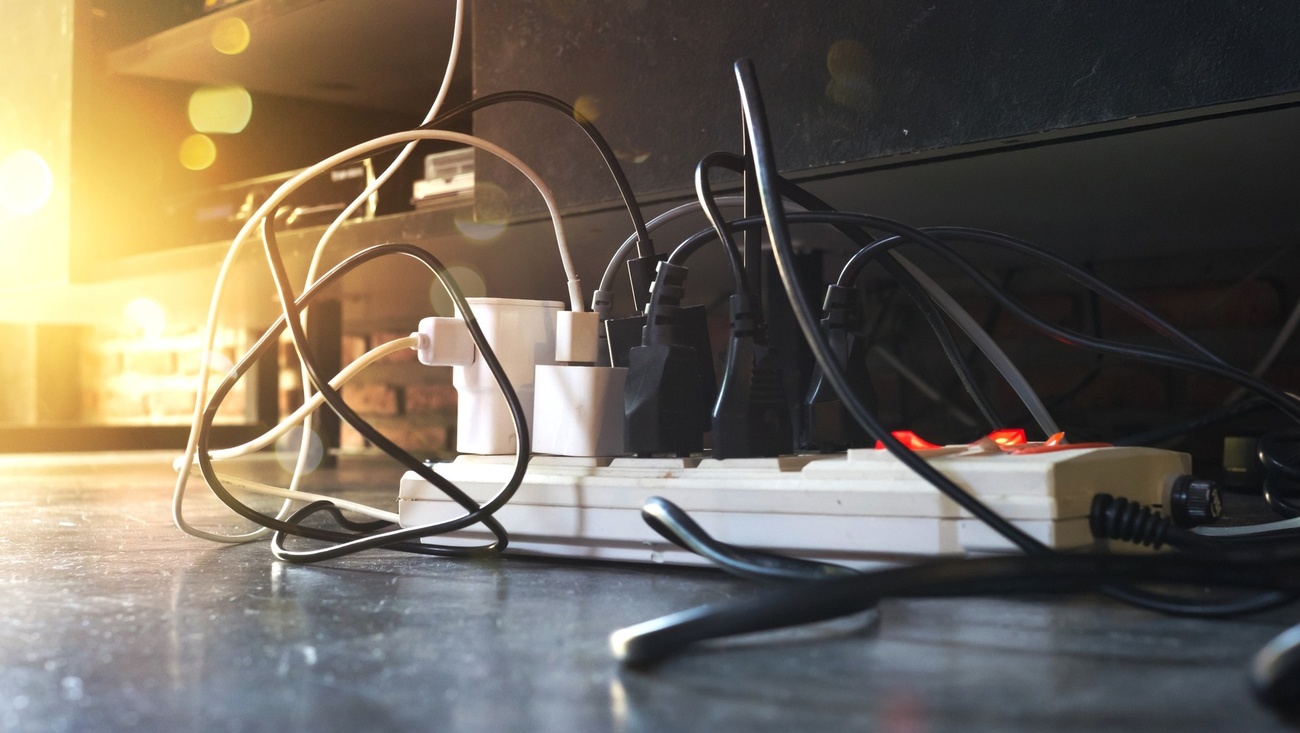
More
Power rationing possible, warns Swiss electricity company boss
The increase in energy prices, the volatility of renewable sources and the international political situation represent unprecedented challenges. “The Swiss electricity system is going through the biggest change in its history,” says Alessandro Cameroni at Swissgrid.
But before considering the risk of a blackout (an unexpected interruption of electrical power) and how Switzerland is looking for ways to ensure constant supply, it’s worth understanding how electricity reaches our homes and why 50 is a magic number for grid operators.
Balancing production and consumption
The national grid’s high-tension cables (220,000 and 380,000 volts) transmit electricity produced by power plants in Switzerland and abroad using renewable sources, fossil fuels like coal, or nuclear power.
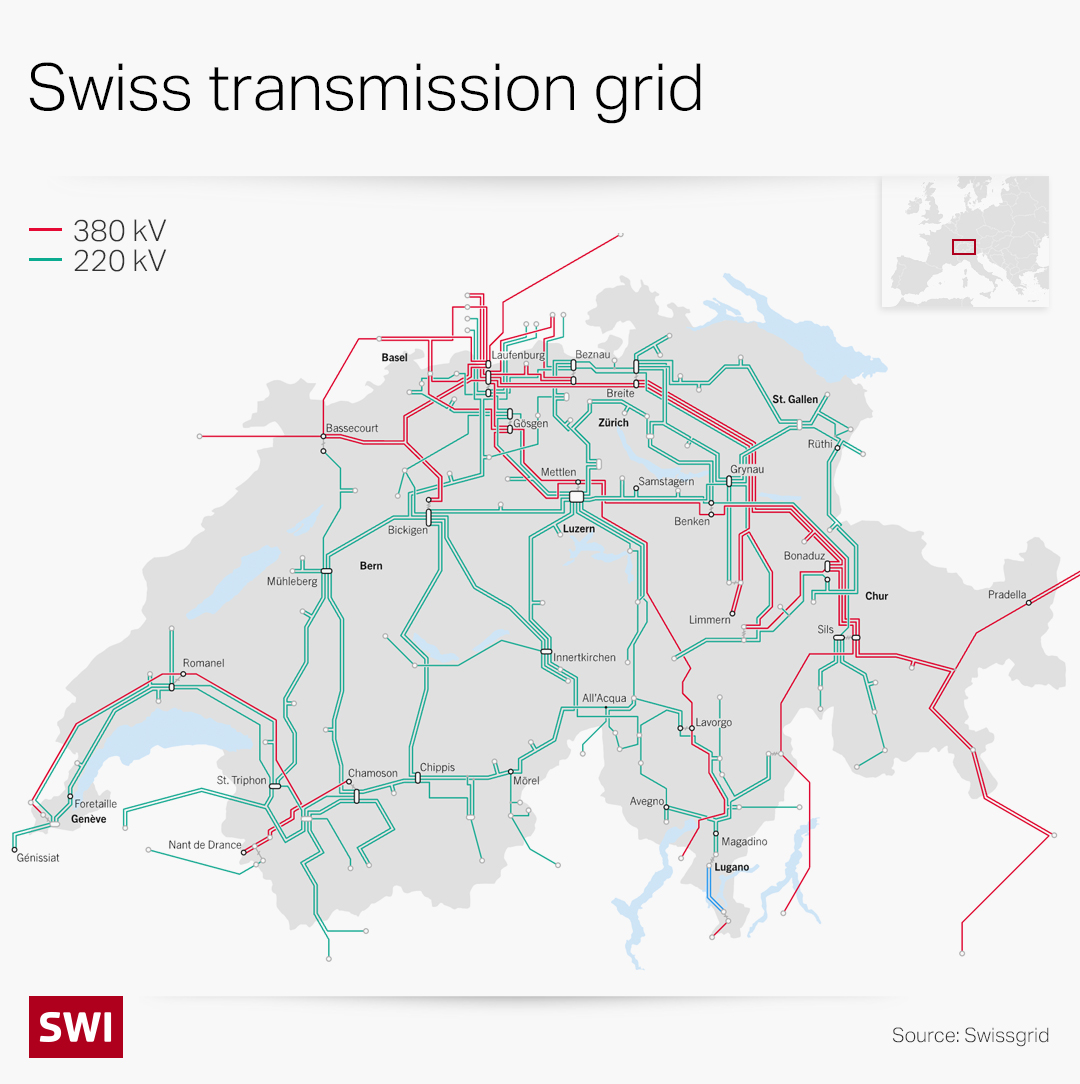
The tension (voltage) has to be as high as possible to avoid any loss of power during transmission. However, before it reaches regional and local distribution networks – and ultimately households – the tension needs to be reduced gradually. This happens in transformers in substations, where the tension is brought down to a manageable 230 volts, so we can charge our mobile phones or work the coffee machine.

Tension is not the only key parameter. To transport electricity in an efficient and secure manner, the frequency has to be kept at 50 hertz (Hz) across the European grid (in the US and parts of Japan it is 60Hz). The slightest disparity can affect the stability of the grid and could cause its collapse. That is what (almost) happened on January 8, 2021, when the frequency slipped from 50 to 49.75Hz.
To keep the frequency steady, production and consumption of power need to be perfectly matched. “No matter what happens around Europe – for example, over-production of electricity in North German wind farms – we’ve got to keep that frequency at 50 hertz,” Cameroni says.
Grid managers respond to variations in frequency by telling the power plants to produce more or less electricity. Good planning – which often needs to be done a year in advance – lets them estimate demand on the grid and the cross-border lines. That means they can maintain a balance between production and consumption.
Tension is measured in volts (V). It is the driving force which transmits the electricity. The greater the difference between the positive and negative poles, the greater the tension.
Intensity is measured in amperes (A) and indicates how many particles are moving at the same time through a conductor. The more electrons are moving, the greater the intensity of the current.
Frequency is measured in hertz (Hz) and indicates the rate at which the current changes direction every second.
Situation in Ukraine
The 50Hz level needs to be maintained even when new countries plug into the European grid. This happened most recently in March, when Ukraine and MoldovaExternal link joined.
Emanuele Colombo, a strategic consultant with Swissgrid, explains that arrangements were made “to prevent problems that might occur in Ukraine from causing havoc in Europe”.
The nuclear power plant at Zaporizhzhia, in central Ukraine, is the largest in Europe. If it were to be disconnected unexpectedly, or if its electricity production were to fall substantially, the whole grid could be affected. “The drop in frequency would be so considerable that we decided to implement safety measures at the border. If there were a problem, Ukraine would be disconnected immediately,” Colombo says.
For Swissgrid and other operators of transmission networks in Europe, the main effect of the war in Ukraine has been an increase in energy prices. This has repercussions on the cost of what is known as reserve power, which Swissgrid buys on international platforms to cope with unexpected fluctuations on its grid. In case of an accidental breakdown at a power station, this reserve can be tapped in a matter of seconds, allowing the missing current to be made up for and the grid kept stable.
‘Neuralgic points’
With the development of renewable energy, the ability to react to sudden fluctuations becomes all the more crucial. This also holds true for Switzerland, since about 10% of the electricity on the European grid transits through the Alpine country. Sun and wind produce electricity, but in an irregular manner; Spain, for example, now produces large quantities of solar power, which are piped into the grid and distributed to other nations.
Swissgrid is currently modernising an infrastructure that was built mostly in the 1960s. “We need to adapt the grid to current needs, expanding it and, if necessary, building new links,” Cameroni says.
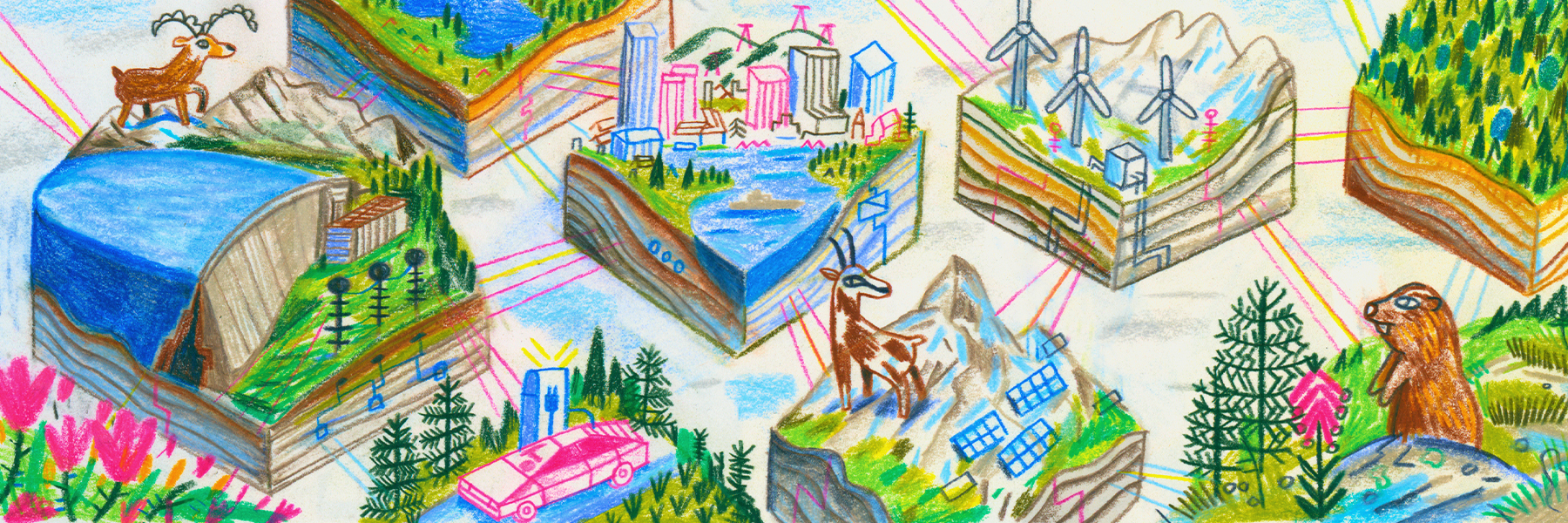
More
Swiss solutions for storing the energy of tomorrow
Christian Schaffner, director of the Energy Science Center at the federal technology institute ETH Zurich, says the Swiss transmission grid was very well designed. In Europe it is one of the most extensive and one of the most redundant for purposes of reliability. However, given that more electricity will be needed in the future, “there are neuralgic points at all levels”, he saysExternal link. In particular, in the transmission grid there are certain nodes, transformers and lines that are already at their capacity limits and need to be expanded, he explains.
Swissgrid envisages a total investment of CHF2.5 billion ($2.55 billion) to renovate and expand the national grid as part of the multi-year plan known as “Strategic Grid 2025”, which was drawn up in 2015. The company hopes that the government will fast-track procedures for approving new lines, as it has said it will in the case of new hydroelectric and wind power stations. On average, it takes about 15 yearsExternal link to complete a new power line.
“The energy world is evolving at a higher speed, which is just not compatible with these waiting periods,” Colombo says.
More electricity for EU, less for Switzerland
Yet investment and fast-tracking of procedures is not enough. Colombo emphasises that cooperation and coordination with European grid operators is essential to determine the capacity for cross-border trading of electricity. This collaboration is still hampered by the lack of an agreement on electricity between Switzerland and the European Union. Such a sector-based agreement would in fact be dependent on the conclusion of a framework agreement, but negotiations were shelved by Bern in May 2021.
“Without an agreement on electricity, the risk increases of unplanned power flows compromising the stability of the grid,” Colombo says.
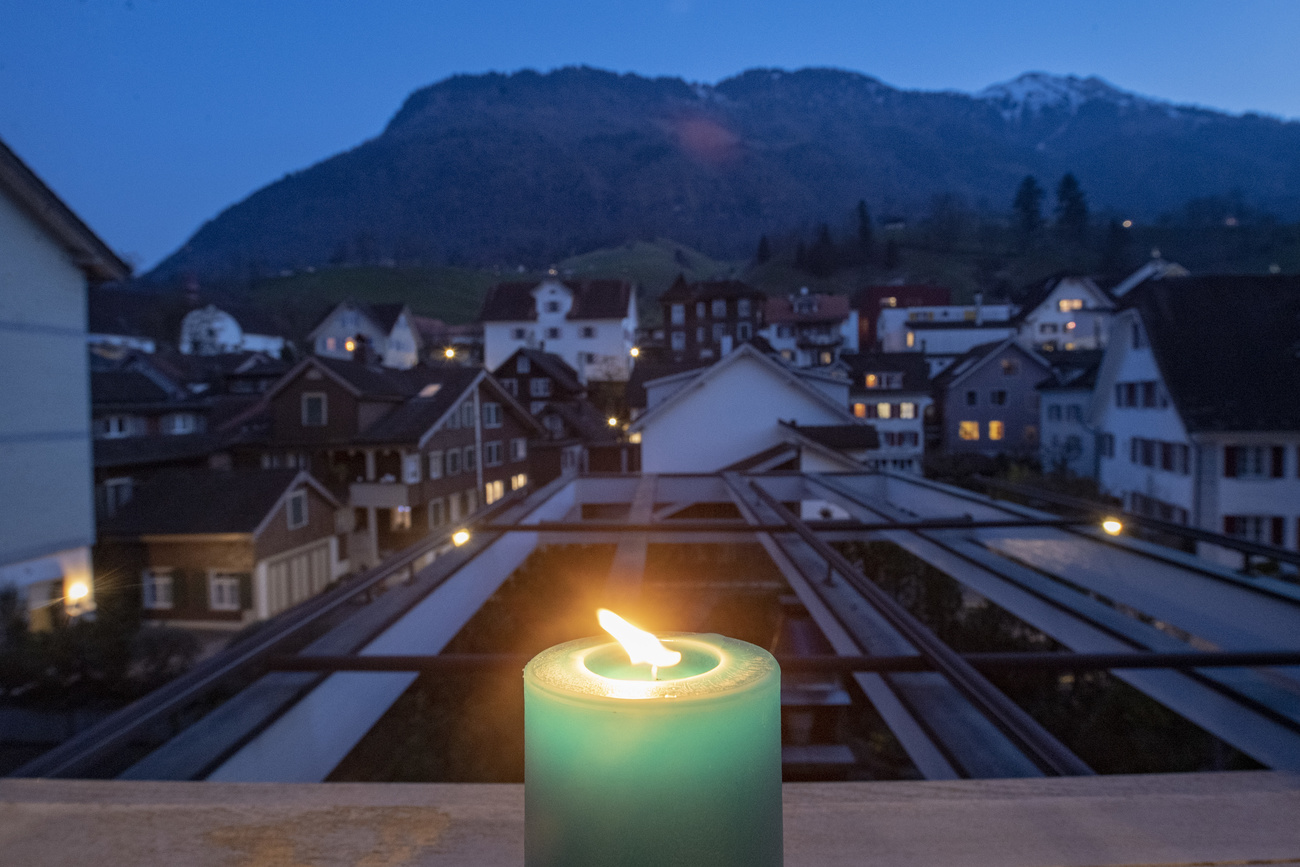
More
Energy deemed most serious problem facing economy
The situation has been further complicated by the implementation of the EU’s Clean Energy Package and in particular its “70% rule”, according to which member states have to make at least 70% of the capacity of their grid available for commercial trading within the EU. Put bluntly, this means more electricity for member states but less for Switzerland.
This could have a negative effect on Switzerland’s capacity to import power in winter and on the stability of the grid. In the worst-case scenario, Switzerland might have to declare its own grid temporarily unavailable and reduce transmission of current on its territory.
Swissgrid is countering this problem by entering into bilateral technical agreementsExternal link with other European network operators.
Yet these contracts are no substitute for an agreement on electric power with the EU, according to Colombo. “It makes sense for both sides to collaborate because a major problem in Switzerland means a major problem in Europe, and vice versa,” he says. “Switzerland needs Europe and Europe needs Switzerland.”
Edited by Sabrina Weiss, translated from Italian by Terence MacNamee

In compliance with the JTI standards
More: SWI swissinfo.ch certified by the Journalism Trust Initiative









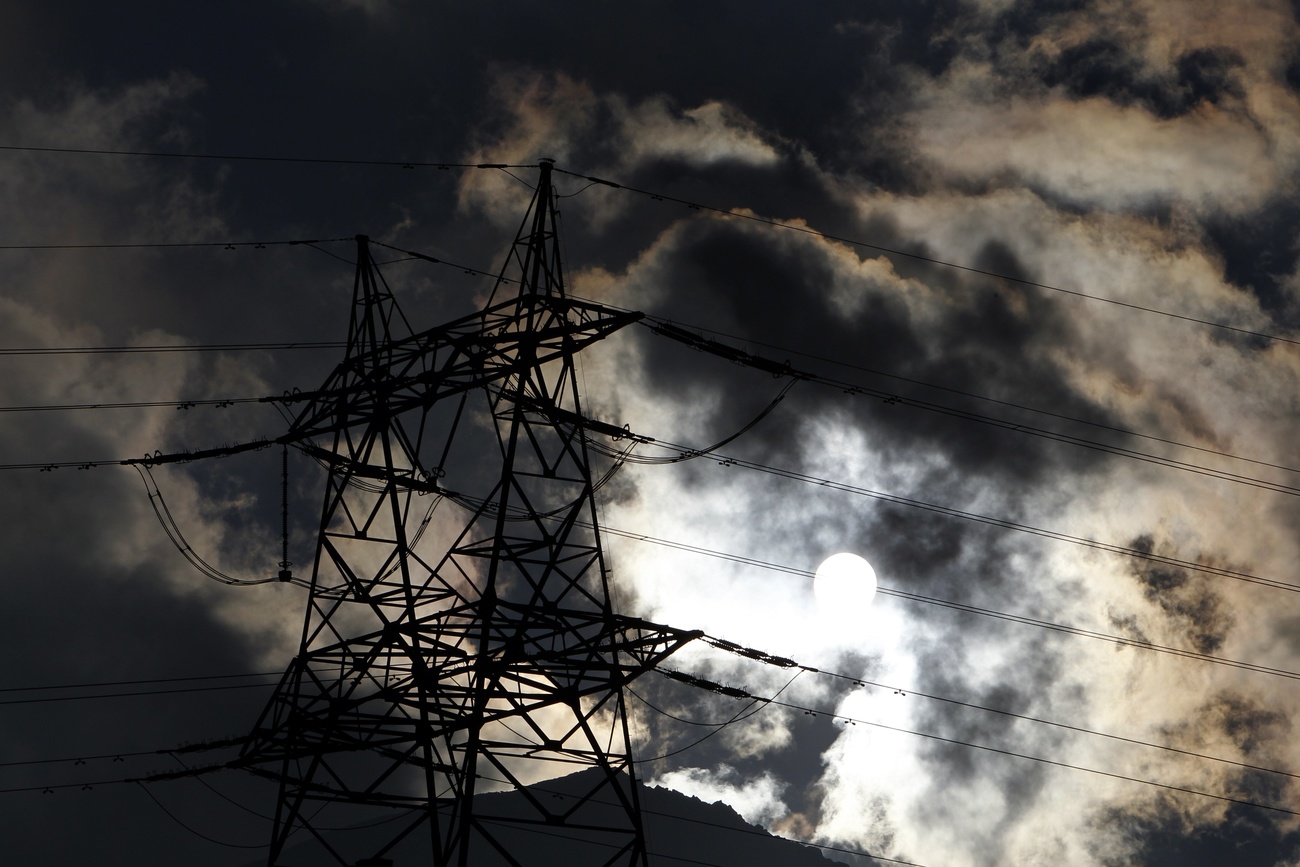



You can find an overview of ongoing debates with our journalists here . Please join us!
If you want to start a conversation about a topic raised in this article or want to report factual errors, email us at english@swissinfo.ch.